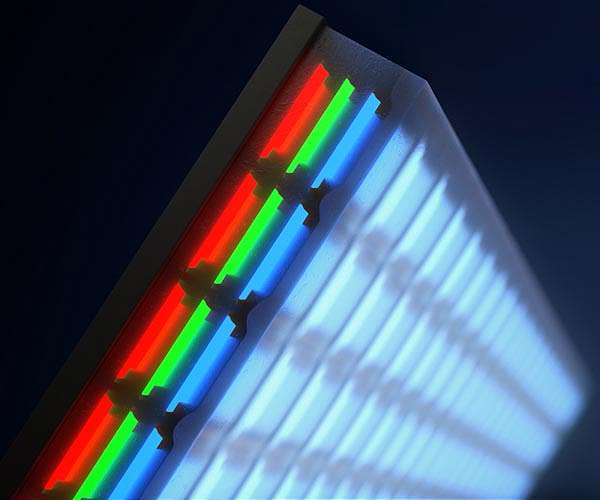Form-changing hybrid materials offer a light future for solar and LED innovation
In today’s energy-intensive environment, the design of new devices for more efficient and renewable energy sources is at the forefront of scientific research. A particularly interesting approach uses Ruddlesden-Popper Perovskites-a Type Laagnant Material made from alternating sheets of inorganic and organic components. These materials are potentially ideal for various applications, including light -emitting diodes (LEDs), thermal energy storage and technology for solar panels.
Recent research under the leadership of graduated student Perry Martin of the University of Utah in the Bisque Lab, housed in the Department of Chemistry, used temperature-dependent absorption and emission spectroscopy, as well as X-ray fraction, to study the phase transition behavior of perovskites. A phase transition is a discreet change from one state from matter to another (such as ice to liquid water). Some substances, including water and perovskites, have several fixed situations with different properties.
The Bischak Lab showed a connection between phase transitions and the emissioning properties of the material. This introduces a form of dynamic control or rejection, which offers multiple benefits for technological applications. In particular, because perovskites contain both organic and inorganic components, the organic layers of phase transitions that influence the structure of the inorganic layers. The interplay of the organic and inorganic layers drastically changes the properties of the material.
“There are almost greasy chains that crystallize together. When you touch a certain temperature, they will essentially melt and become more unordered,” said assistant professor Connor Bischak, senior author of the new study. “The melting process influences the structure of the inorganic component, which controls how much light is emitted from the material and wavelength.”
“Perovskites can easily be manipulated at a molecular level,” Bischak added. “The emission wave length can be adjusted from ultraviolet to near-infrared.”
This totability is a great strength for applications in energy storage technology. Thermal energy storage in particular is an exciting area for perovskiet applications, because they can be coordinated to have specific properties by adjusting their temperature. In addition, perovskites can undergo repeated thermal cycles with minimal demolition, which ensures greater efficiency and a long service life compared to the current industrial stand materials.
In addition, perovskites offer powerful benefits for the next generation of solar cell technology. Although silicon has long been the standard material for solar cells, it is confronted with limitations because of the energy-intensive production process and continuous supply chain problems. Perovskites, on the other hand, are solution -workable materials.
“What that means is that you actually dissolve all these precursorchemicals in a solvent, and then you can almost make your solar cell as prints with ink,” Bischak said. “It produces an efficient solar cell material that is better than silicon.”
An additional advantage is that existing silicon solar cell technology with perovskites can be affected to significantly increase their efficiency.
As the demand for cleaner and more customizable energy solutions continues to rise, perovskiet materials offer a promising path ahead. Their unique coordination, the convenience of processing and compatibility with current technologies make them a strong candidate for innovation in energy solutions.
Research report:Coupled optical and structural properties of two -dimensional metalhalhals perovskites over phase transitions

